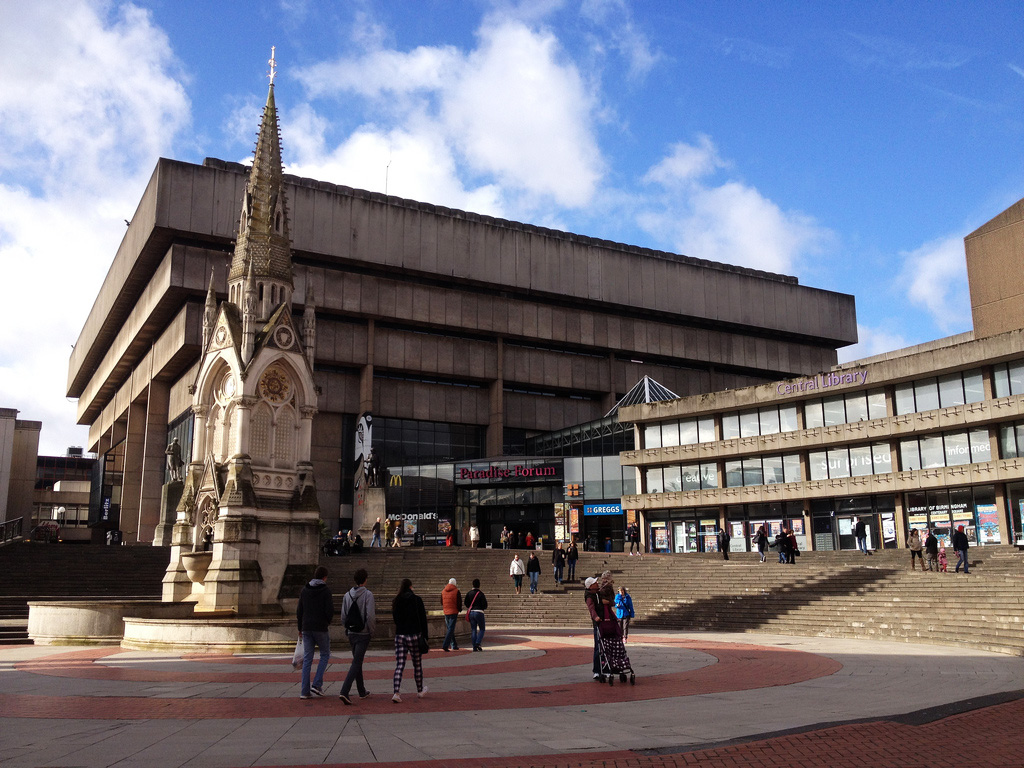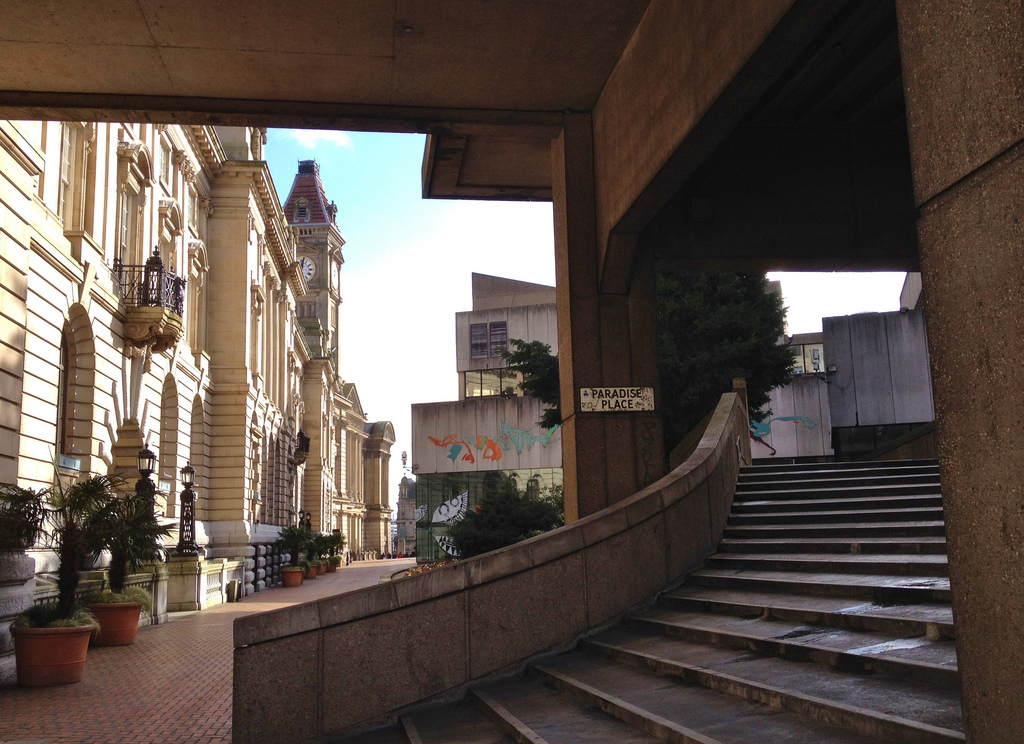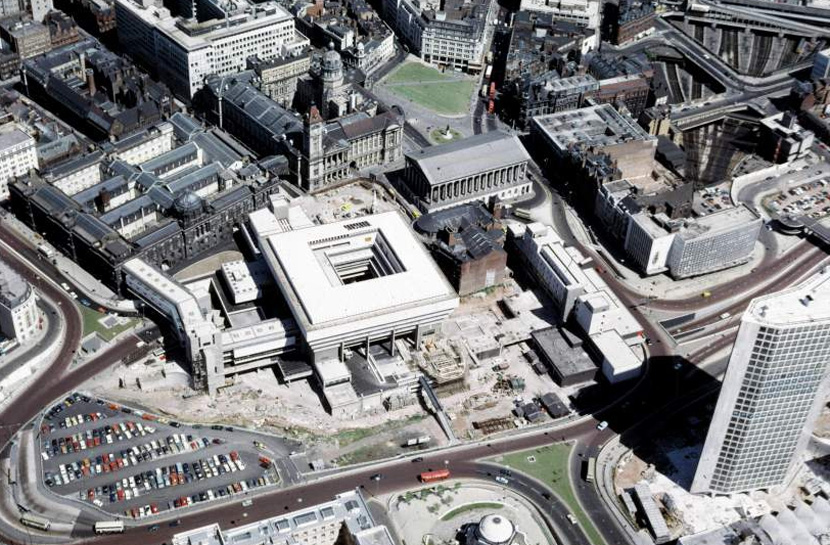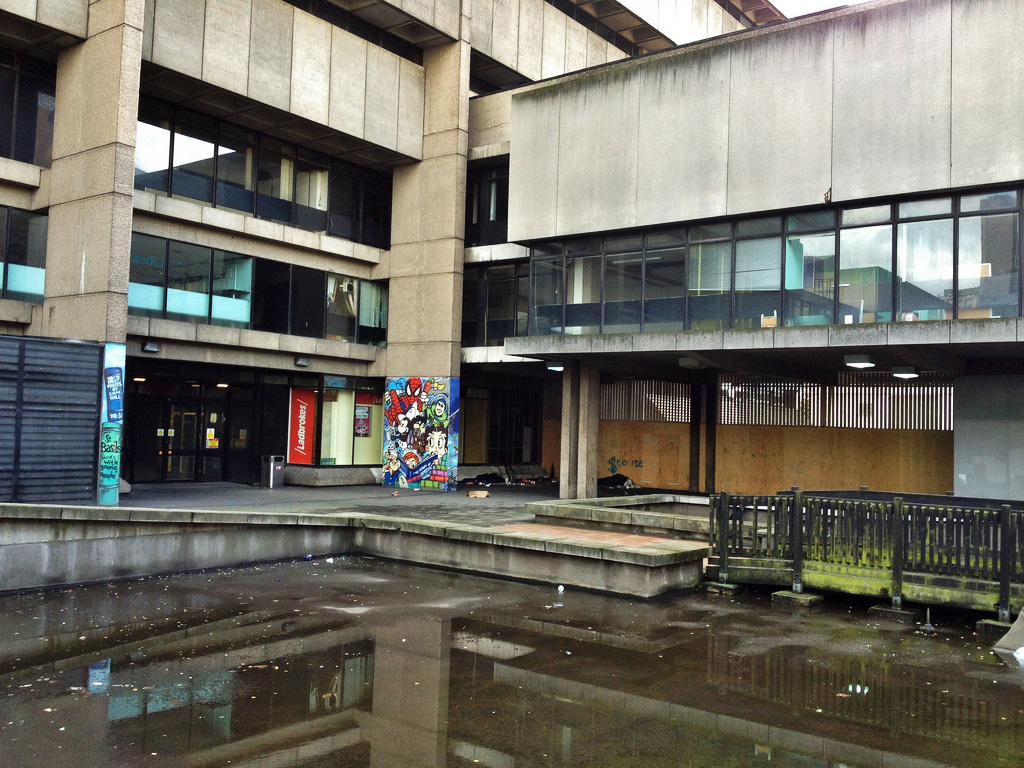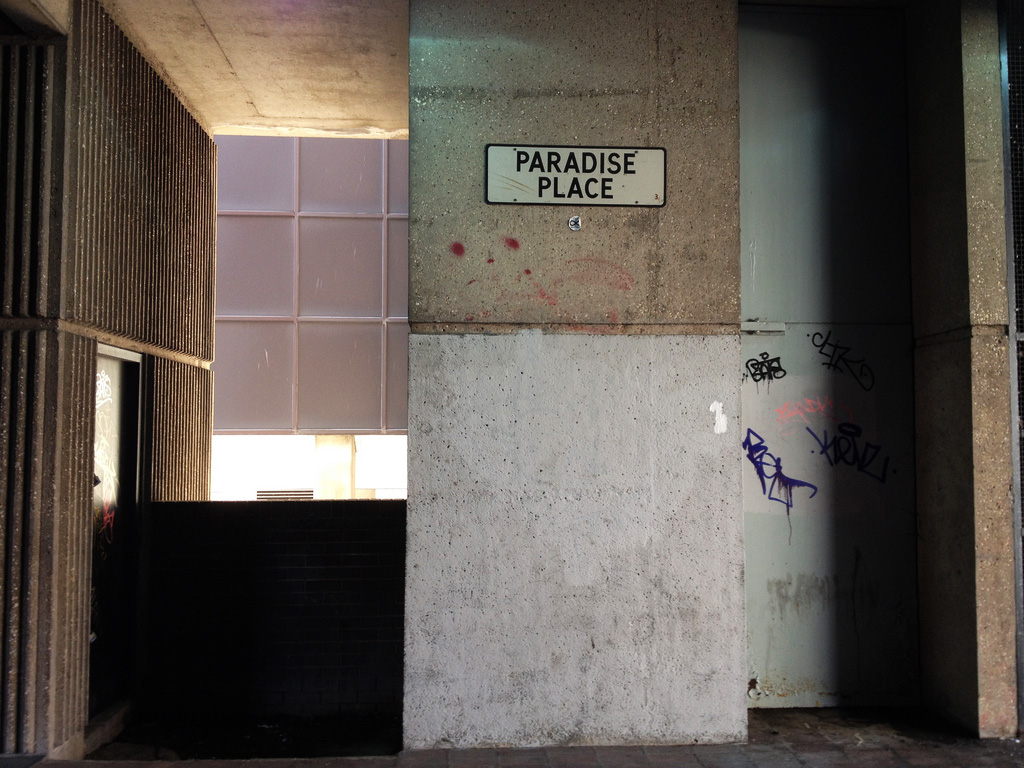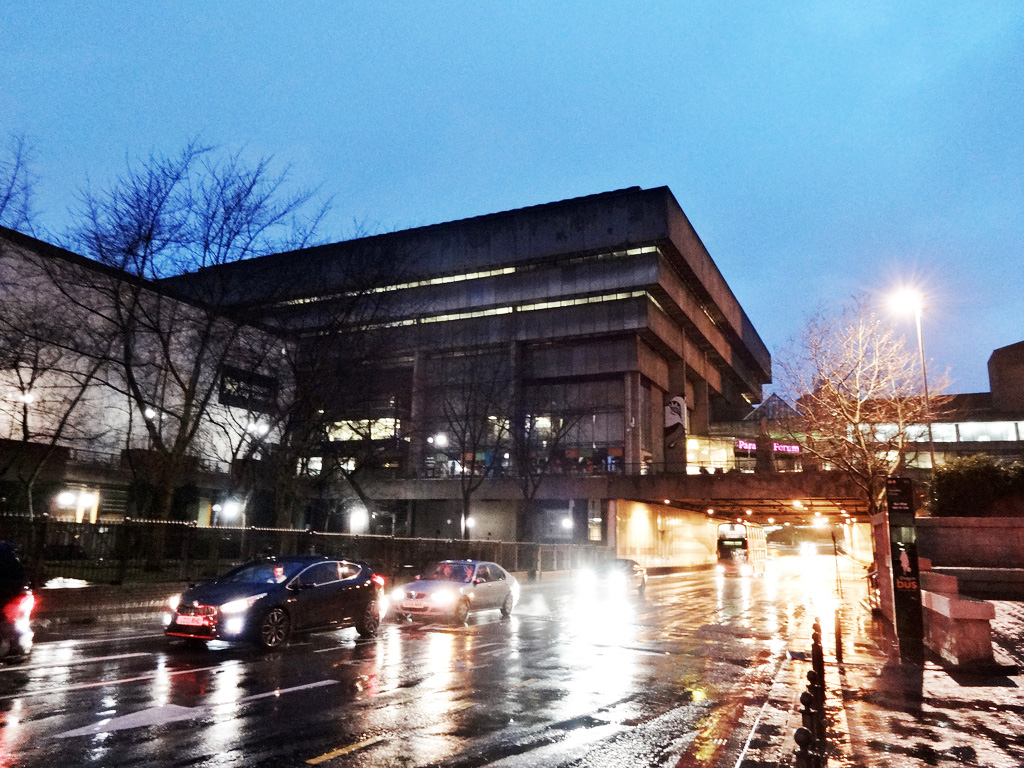‘Forward’. A single word, emblazoned at the foot of Birmingham’s coat of arms. Few mottos could better capture the mentality of Britain’s second largest city. Arguably no other place in the UK has been so relentless in seeking to erase the past and reinvent itself every few decades. And few places better exhibit this contradictory tendency, at once both hopeful and myopic, than Birmingham’s 1970s Central Library – loved and hated in equal measure, and now facing demolition at the end of the year.
The library squats at the civic heart of the city centre. Next to the elegant classical Town Hall and the grand Victorian municipal offices and art gallery, the discoloured concrete and top-heavy shape have long been decried as misshapen and out of place, looming uncomfortably over two of Birmingham’s best-loved buildings. Now empty, its demolition will make way for a generic multi-million-pound scheme of offices and retail, claimed to “open up” the city centre to create new views and linkages. The sparkly 21st Century replacement library named the “Library of Birmingham”, opened in September 2013 just a few hundred metres away.
When Central Library opened in 1974 – forty years ago – it was cited as the largest non-national library in Europe, and a powerful example of British Brutalism. It is composed of two parts: an extroverted three storey lending library, curving out into Chamberlain Square; and the larger eight storey reference section forming a bold inverted ziggurat, one of only two such examples in the world (the other being Boston City Hall). The concrete planes float above pillars now encased in glass, lending the top-heavy shape an improbable weightlessness. The vast interior spaces are low-ceilinged and cool, untouched by direct sunlight. The Central Library is the most notable component of Paradise Circus, a complex of tired concrete and glass buildings characterised by rough sleepers and graffiti; secret squares, dead ends, and grimy passageways.
The Central Library is part of a much larger story of post-war Birmingham. Although devastated during the Birmingham Blitz, the city emerged in the 1950s as the UK’s most successful city outside of London. An array of manufacturing and a burgeoning office sector supported a population of over one million, with nearly zero percent unemployment. By 1961 household incomes in the West Midlands were 13 percent above the national average, exceeding even London and the South East. Birmingham’s sense of optimism and pride was near unbounded, a sense keenly reflected in the architecture and planning policies of the time.
The figure who defined this era perhaps more than any other was Sir Herbert Manzoni, Chief Engineer of the City for nearly thirty years and, thanks to his clear-headed vision and powers of persuasion, arguably the most powerful man in the City Council. His comprehensive redevelopment plans shaped Birmingham in a way no other individual had since the Victorian boom under the mayor Joseph Chamberlain.
Aided by a ready supply of finance from central government and extensive powers for compulsory purchase, Birmingham started on a campaign of modernism matched by few other British cities. Gone were the overcrowded slums and the fussiness of grimy Victoriana. Shiny new office towers, the vast Bull Ring shopping centre, and a rebuild of the central train station transformed Birmingham into a modernist utopia: rosary beads of a hymn to progress, threaded together by a new ring motorway designed by Manzoni and completed in 1971. Just outside of the centre, the new national and regional motorways converged in a gravity-defying splatter known as “Spaghetti Junction”, soon one of the city’s most well-known landmarks. Birmingham was a paean to the automobile, the most American of the UK’s cities: our answer to Detroit.
The apex of this vision was the new Central Library. Conceived in the late 1960s by well-known local architect John Madin, the ziggurat was to be part of a vast new civic centre comprising of a School of Music, Drama Centre, offices, shops, a car park, and a new bus interchange. In typical modernist fashion, functions were vertically segregated: motorways underground, pedestrians up above, and all interlaced with new public gardens and large-scale water features. Madin intended the new building to be clad in Portland Stone, complementing the classical Town Hall next door. The largest library in Europe: the ultimate symbol of municipal confidence and authority.
Yet by the 1970s Birmingham’s step was faltering. The new national Labour government of 1964, fearing the growth of large industrial cities, announced that Birmingham was simply not to grow any more. Inner city slum populations were to be resettled in the surrounding towns, and new industries would be deflected to the deprived North-East and Wales. From 1965 onwards, all future office development was effectively banned. The city became gradually more and more dependent on a few aging key industries (mainly automobiles) whilst the population was either forcibly decamped or fled to the suburbs via the new roads, leaving the poor and elderly marooned in tower blocks girdled by elevated motorways.
The economic crisis of the 1970s and the restructuring that followed spelled disaster for Birmingham’s car industries. Within just a few years the GDP of the West Midlands region went from the second highest in the country to lowest; earnings from highest to lowest; and unemployment climbed to 20 per cent by 1982.
When the Central Library was designed in 1969, Birmingham was riding the crest of a wave. Yet even then, subsequent cut-backs attenuated Madin’s original proposals: the stone demoted to pre-cast concrete, the surrounding civic centre never leaving the drawing board. The bus interchange was built but never used. The striking and cavernous central atrium proved windy, cold and damp, so was soon enclosed by glass and colonised by tatty fast food restaurants. Only one of the seven planned water gardens was built. It was never finished.
In the face of Birmingham’s economic meltdown and difficulty adjusting to a post-industrial landscape, the flyovers and tower blocks came to symbolise everything wrong with post-war planning and design: bureaucratic, paternalistic, almost authoritarian. A city of urine-soaked subways, deadened public spaces, and roaring traffic. Britain’s “Motor City” was a concrete jungle, the thundering motorways a cruel reminder of all that had been lost. It is a reputation that the city has been battling against ever since.
The Central Library no longer has a place in Birmingham’s vision of itself. Birmingham is a city that wants to be business- and pedestrian-friendly; a cultural hub rather than a car hub. The concrete Bull Ring shopping centre has been given a glittering and futuristic makeover. The inner ring road has been levelled, replaced with an urban boulevard. The bunker-like train station is in the midst of a Gehry-esque renovation. The final piece of the jigsaw is the Central Library, with what is left of the inner ring road roaring beneath it. The last relic of an era when Birmingham was the most innovative, powerful and modern of the UK’s regional cities: the surviving dinosaur of Motor City.

